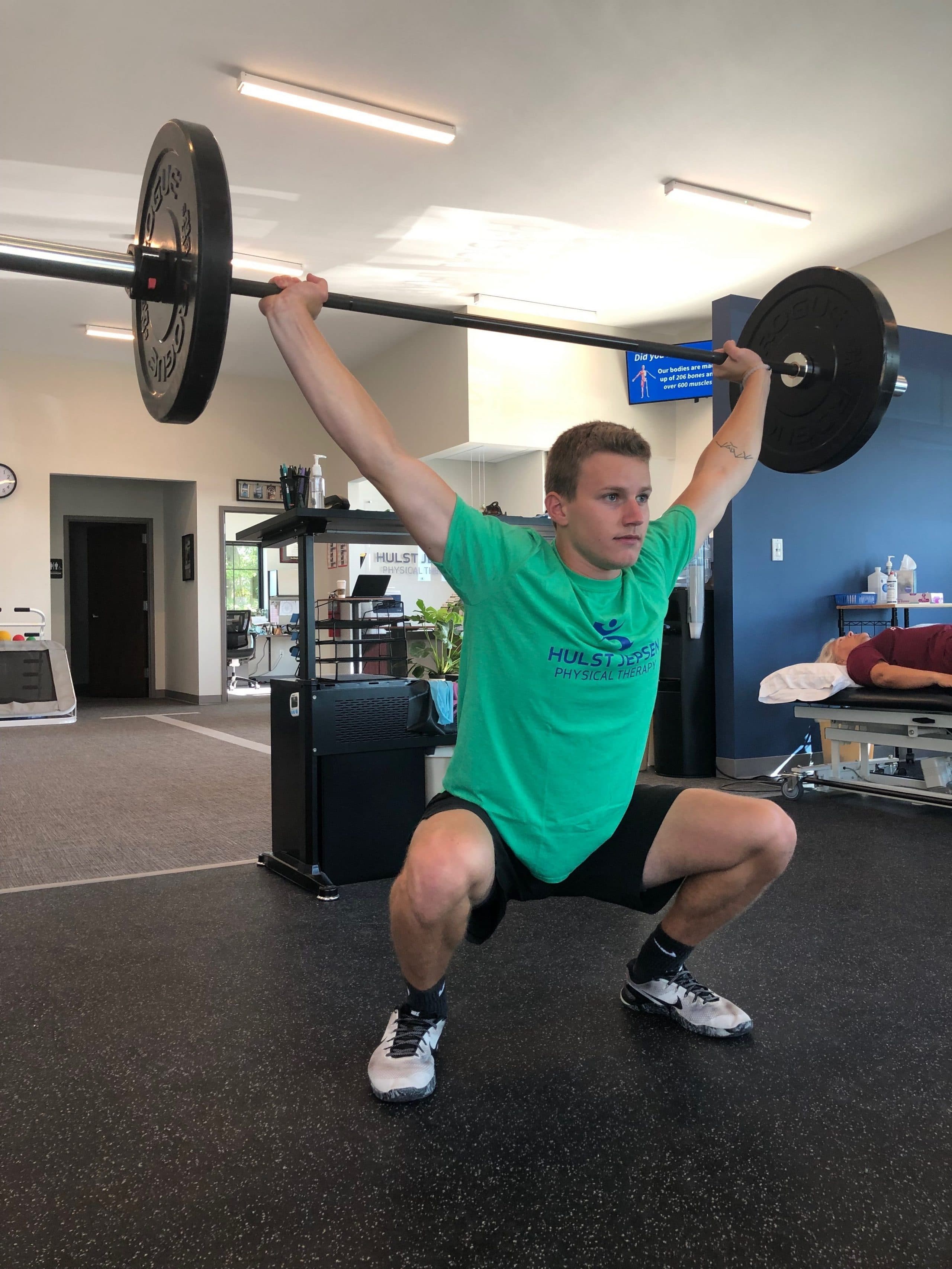What can a Physical Therapist offer a CrossFit athlete?

CrossFit has become more than a fad within the fitness industry. This rapidly growing form of fitness spans across the globe with over 15,000 CrossFit affiliated gyms worldwide, and 49 of them located in Michigan!
The rate of injury within CrossFit has been proven to be the same as or less than during participation in other sports, but with the rapid growth in participation, there have also been a large number of injuries to account for.
For those who have not participated or are unaware, CrossFit promotes itself as being focused on producing a “constantly varied, high-intensity, functional movement” form of fitness in an effort to improve one’s “capacity to move large loads over long distances, and to do so quickly.” The “WOD” or workout of the day at your local CrossFit gym, also termed “box”, can include many different exercises ranging from plyometrics, agility, body weight resistance training, barbell weight training, to gymnastic-type movements. Adaptations or scaling options can be made to allow anybody, beginner to professional athlete, to participate at their own independent level.
CrossFit, with its emphasis on high-intensity, varied movements, demands a lot from the body. Whether you’re pushing through a heavy deadlift, jumping rope, or holding a handstand, your body is constantly challenged in new and different ways. This intense variety and high level of exertion make it essential to have the right gear to support your movements and minimize the risk of injury. Wearing the wrong attire can not only hinder performance but also increase the chances of discomfort or even injury.
For athletes in this sport, where mobility, durability, and breathability are key, the right training apparel becomes as essential as the training itself. Built for Athletes understands the specific demands of CrossFit and has designed a line of clothing that supports every aspect of your workout. Their gear is built to endure the toughest workouts, offering maximum flexibility and comfort, whether you’re lifting heavy barbells or sprinting through a high-intensity interval. From compression shirts that provide muscle support during rigorous lifts to moisture-wicking shorts that keep you cool during long, sweat-drenched sessions, Built for Athletes ensures your clothing works as hard as you do.
With training apparel that moves with your body, reduces chafing, and supports intense physical activity, you can focus on performing your best without worrying about your gear. This focus on quality and performance allows athletes to push their limits while minimizing the potential for injury, making sure they’re always at the top of their game.
Having the right gear is just one part of excelling in CrossFit — fueling your body properly and maintaining overall health are just as critical. High-intensity training takes a toll on the body, and without proper recovery and nutritional support, it’s easy to hit a plateau or risk injury. Eating nutrient-rich foods, staying hydrated, and getting enough rest are essential to muscle repair and performance improvement.
For those struggling with weight loss despite consistent training, medical support can make a meaningful difference. That’s where Coby Health comes in. Their online GLP-1 weight loss medication treatment helps regulate appetite and improve metabolic function, making it easier to shed stubborn weight while maintaining energy levels for high-intensity workouts. Pairing targeted weight loss solutions with consistent training ensures that athletes can perform at their best without feeling depleted or off-balance.
But how does CrossFit mesh with the healthcare industry?
Quite well actually.
CrossFit, as a brand, is focused on getting people moving, and by doing so, reducing chronic disease. CrossFit and physical therapy parallel well in a very natural way, as physical therapists are trained to be the movement experts of the healthcare industry. As PTs, it is our job to help you move in a more efficient manner, by guiding you in making the most appropriate changes to your muscle strength, flexibility, and neurological mechanisms. Our goal is to diagnose your musculoskeletal conditions, help you understand the natural healing timeframe, and take you through those phases until you reach your goals.
If you are already participating in something such as CrossFit that is good for your general well being, it is in our best interest as healthcare provides to help you stay as active as possible, instead of removing you from the activity for a period of time while you are healing. Being physically active has been proven to reduce typical healing times as well as injury rates in multiple populations. A physical therapist can help you overcome your injury while making suggestions for appropriate modifications because of the arthrokinematic knowledge.
So, what exactly can a physical therapist offer a CrossFit athlete?
- The diagnostics to help with aches and pains that may be limiting your performance
- The tools to help you counteract the things that may be limiting your performance
- The understanding of typical healing time frames and modifications to allow you to continue to participate in your activities while rehabbing your injury
If you are doing CrossFit and have an injury, or want to start CrossFit and don’t know where to begin, reach out to one of our “Fitness Athlete” therapists, to schedule a free consult. Keep in mind that Direct Access in Michigan may allow you to start your therapy without a referral from your physician.

